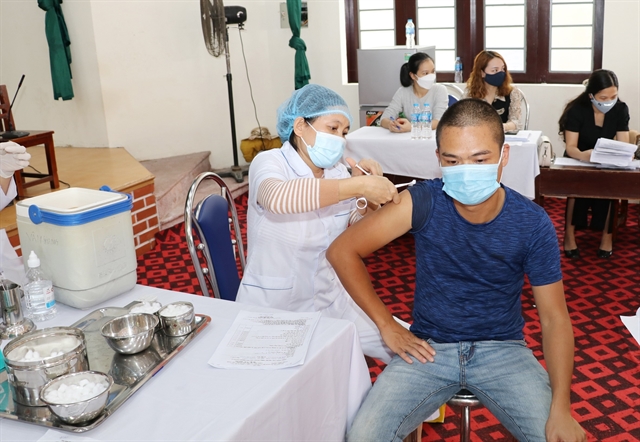 Society
Society


|
| The low rate of vaccination when the fourth wave started was one of the weaknesses in the prevention and control work. — VNA/VNS Photo |
HÀ NỘI — The Ministry of Health has highlighted five shortcomings in the prevention and control of the fourth COVID-19 wave, including in medical facilities and preventive medicine.
According to the Health Ministry, the number of cases in the fourth wave has exceeded all predictions and had a profound impact on social lives, public health and psychology, as well as forcing the suspension of production, jobs and local livelihoods.
Việt Nam has recorded more than 932,000 cases of COVID-19, ranking 40th out of 233 countries and territories in terms of the number of infection cases. From April 27 until now, over 927,000 cases have been confirmed. More than 821,000 patients have recovered.
The weaknesses in facing the fourth COVID-19 wave include shortcomings in grassroots healthcare facilities, preventive medicine and the mobilisation of available sources in many localities.
The Health Ministry said local authorities did not prepare enough for communication campaigns to report pandemic developments to the public. In the early days, the application of technology was not effective. The direction and administration at all levels were sometimes inconsistent and passive.
The current legal documents do not cover all the scenarios in response to the outbreak. Some regulations show conflicts and are being amended, causing delays which leads to public frustration.
Meanwhile, the social security work has not been ensured in a number of localities, especially in social distancing areas, the Ministry said.
One of the reasons for the shortcomings is the fast-spreading Delta variant, particularly as vaccination rates in the first phase of the pandemic wave remained low.
The Ministry said a surging number of infections in a short space of time led to an overload of the medical system and an increase in fatalities.
As of November 2, Việt Nam reported more than 22,200 deaths from COVID-19, which equals 2.4 per cent of the number of infection cases. This is higher than the global average of 2.06 per cent.
More than 80 per cent of people from 18 years old have been inoculated with one vaccine shot. About 34 per cent of people aged above 18 have received two doses.
Ten localities have vaccines fully covering more than 95 per cent of their population aged above 18.
Almost none of the people who have been given a vaccine and later caught COVID-19 have been seriously ill, according to recent surveys by the health departments of Hải Dương Province and Hà Nội. — VNS




